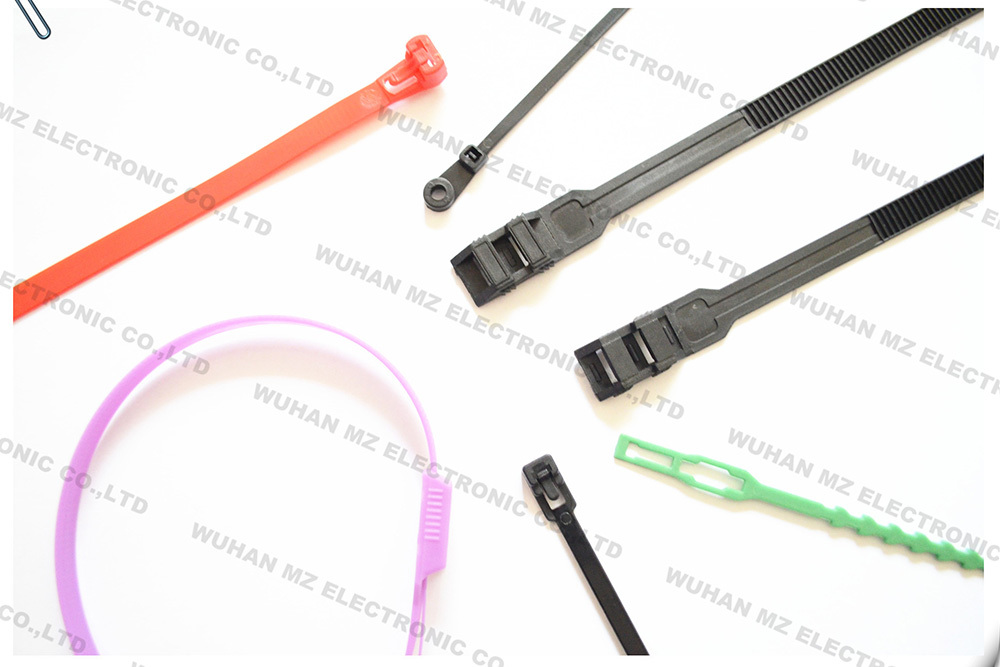01
2025
-
08
Anti-detachment binding method of plastic cable ties
Author:
Preventing Cable Tie Slippage: Secure Binding Techniques for Reliable Fastening
Plastic cable ties are widely used for organizing cables, securing items, or holding components together, but their tendency to loosen or slip under tension can compromise functionality. By employing advanced binding methods, adjusting tension properly, and reinforcing connections, you can ensure cable ties stay firmly in place for both temporary and long-term applications.
1. Dual-Loop Interlocking for Enhanced Grip
A common cause of slippage is insufficient friction between the tie and the object. Creating a dual-loop interlock increases surface contact and prevents the tie from rotating or loosening over time.
- Step 1: Form the First Loop
Wrap the cable tie around the object, leaving a small gap (about 1/4 inch) between the tie and the surface. This gap allows for a second loop without overcrowding. - Step 2: Add a Secondary Loop
Pass the tail of the tie through the locking mechanism again, creating a second, overlapping loop. Ensure both loops sit snugly against the object without overlapping each other. - Step 3: Tighten Alternately
Pull the tail gently to tighten the first loop, then adjust the second loop to match tension. Alternating between loops ensures even pressure distribution.
This method is ideal for securing coaxial cables to walls, bundling irregularly shaped tools, or fastening hoses to fixtures where vibration might cause slippage.
2. Tension-Controlled Locking with a Twist
Over-tightening can deform the locking mechanism, while under-tightening leaves room for movement. A twist-and-lock technique balances tension to maintain a secure hold without damaging the tie.
- Step 1: Position the Tie Correctly
Align the cable tie so the locking mechanism faces outward, away from the object’s surface. This prevents accidental pressure on the lock during adjustments. - Step 2: Apply Gradual Tension
Pull the tail slowly until the tie feels snug but not constricted. For cylindrical objects, rotate the tie slightly as you tighten to engage more of the locking teeth. - Step 3: Add a Half-Twist for Stability
Once locked, gently twist the tail 90 degrees (a quarter-turn) to wedge it deeper into the locking mechanism. This creates friction that resists backward movement.
This approach works well for securing outdoor lights to railings, fastening camping gear to backpacks, or bundling cables in high-traffic areas where accidental tugs are common.
3. Reinforced Anchoring with a Secondary Tie
For critical applications where a single tie might fail—such as supporting heavy loads or securing items in transit—a secondary tie acts as a backup to prevent total disconnection.
- Step 1: Install the Primary Tie
Fasten the first cable tie tightly around the object, ensuring it sits flush against the surface. Test its stability by gently tugging in multiple directions. - Step 2: Add a Perpendicular Secondary Tie
Position a second tie at a 90-degree angle to the first, wrapping it around both the object and the tail of the primary tie. This creates a cross-braced structure. - Step 3: Secure the Secondary Tie
Tighten the secondary tie just enough to hold the primary tie in place without deforming it. Leave a small amount of slack to accommodate minor shifts.
This method is useful for anchoring tarps to frames, securing ladders to vehicles, or bundling industrial materials where a single point of failure could be dangerous.
Optimizing Performance in Challenging Environments
- Avoid Sharp Edges: Route ties away from corners or protrusions that could cut into the plastic over time. For example, when securing cables to metal racks, use rubber grommets to create a smooth surface.
- Protect Against UV Exposure: In outdoor settings, shield ties from direct sunlight by wrapping them around objects that provide shade, such as tree branches or covered patio structures.
- Minimize Vibration: For applications involving machinery or vehicles, add a layer of foam or rubber between the tie and the object to dampen vibrations that could loosen the grip.
By combining these techniques—dual-loop interlocking, tension-controlled twisting, and reinforced anchoring—you can significantly reduce the risk of cable tie slippage across diverse scenarios, from everyday organization to heavy-duty industrial use.
plastic cable ties
Hot News
2025-08-01
Tips for plastic cable ties to prevent scratches on items
Plastic cable ties are versatile tools for securing items, but their rigid edges and tightening mechanism can scratch, dent, or mar delicate surfaces like painted metal, polished wood, or soft plastics. By adopting protective wrapping methods, adjusting tension carefully, and using cushioning materials, you can ensure secure fastening without causing damage.
2025-08-01
Anti-detachment binding method of plastic cable ties
Plastic cable ties are widely used for organizing cables, securing items, or holding components together, but their tendency to loosen or slip under tension can compromise functionality. By employing advanced binding methods, adjusting tension properly, and reinforcing connections, you can ensure cable ties stay firmly in place for both temporary and long-term applications.
2025-07-31
Long-term fixation method of plastic cable ties
Plastic cable ties, when used strategically, can provide reliable long-term securement for items like outdoor equipment, structural supports, or storage systems. Their effectiveness depends on proper tensioning, environmental protection, and reinforcement to withstand stress, weather, and wear over time. Below are methods designed to ensure stability and longevity in fixed installations.
2025-07-31
Quality identification of wrenches
Plastic cable ties are ideal for temporary fixes, offering fast assembly and easy removal without damaging surfaces. Whether organizing cables during a project, securing loose items in transit, or holding components together during assembly, these techniques ensure stability while allowing flexibility for adjustments.

